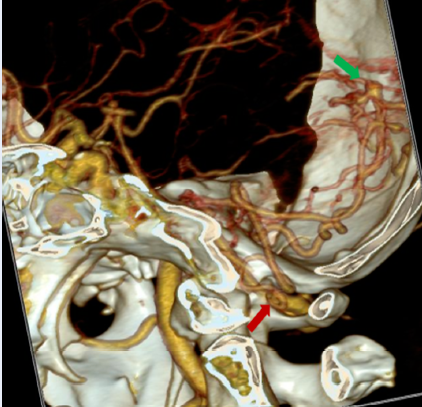Treatment of arteriovenous malformations associated with ruptured intracranial aneurysm
DOI:
https://doi.org/10.15419/bmrat.v10i4.801Keywords:
arteriovenous malformations, subarachnoid hemorrhage, multidisciplinary treatmentAbstract
Spontaneous subarachnoid hemorrhage (SAH) is a specific characteristic of aneurysmal rupture. SAH coexisting with arteriovenous malformations is challenging to treat because the patient status at admission is severe and the therapeutic approach is multidisciplinary: endovascular treatment, cerebral fluid drainage, and decompressive craniectomy. We report a clinical case successfully treated for cerebellar hemorrhage due to a ruptured aneurysm with arteriovenous malformations. A 65-year-old woman was admitted to Can Tho SIS General Hospital within six hours of stroke onset. She experienced loss of consciousness, aphasia, and high blood pressure. Non-contrast computed tomography showed a diffused SAH in both cerebellum hemispheres, Sylvian fissure, intraventricular hemorrhage, and non-communicating hydrocephalus. Her medical history included uncontrolled hypertension. The patient underwent multidisciplinary treatment for hydrocephalus, cerebellar edema, and embolization to control recurrent ruptured arteriovenous malformations. She recovered well and was discharged on day 30 with a Modified Rankin Scale score of 1.

Published
Issue
Section
License
Copyright The Author(s) 2017. This article is published with open access by BioMedPress. This article is distributed under the terms of the Creative Commons Attribution License (CC-BY 4.0) which permits any use, distribution, and reproduction in any medium, provided the original author(s) and the source are credited.
